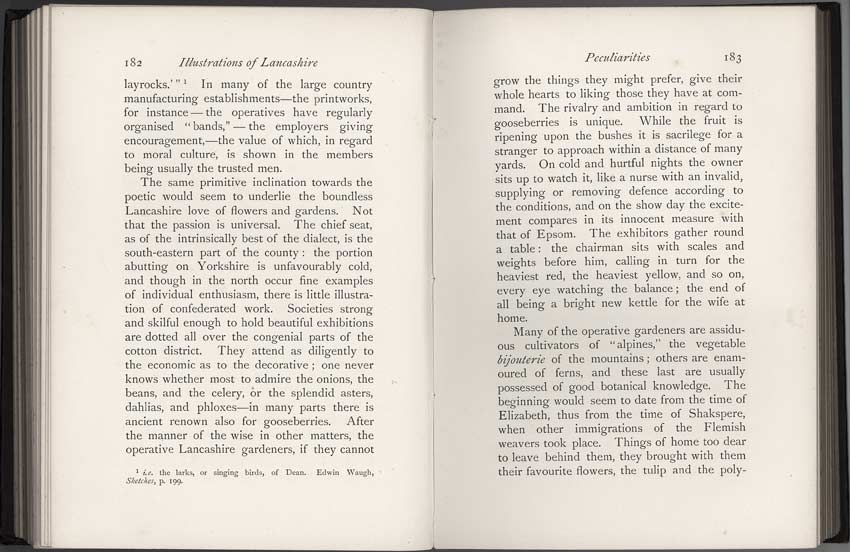
Scan and page transcript from:
LANCASHIRE - Brief Historical and Descriptive Notes
by Leo H. Grindon
Pub. 1892
pages 182-183 |
182 Illustrations of Lancashire layrocks."1 In many of the large country manufacturing establishments - the printworks, for instance - the operatives have regularly organised "bands," - the employers giving encouragement, - the value of which, in regard to moral culture, is shown in the members being usually the trusted men. The same primitive inclination towards the poetic would seem to underlie the boundless Lancashire love of flowers and gardens. Not that the passion is universal. The chief seat, as of the intrinsically best of the dialect, is the south-eastern part of the county: the portion abutting on Yorkshire is unfavourably cold, and though in the north occur fine examples of individual enthusiasm, there is little illustration of confederated work. Societies strong and skilful enough to hold beautiful exhibitions are dotted all over the congenial parts of the cotton district. They attend as diligently to the economic as to the decorative; one never knows whether most to admire the onions, the beans, and the celery, or the splendid asters, dahlias, and phloxes - in many parts there is ancient renown also for gooseberries. After the manner of the wise in other matters, the operative Lancashire gardeners, if they cannot 1. i.e. the larks, or singing birds, of Dean. Edwin Waugh, Sketches, p. 199. |
Peculiarities 183 grow the things they might prefer, give their whole hearts to liking those they have at com-mand. The rivalry and ambition in regard to gooseberries is unique. While the fruit is ripening upon the bushes it is sacrilege for a stranger to approach within a distance of many yards. On cold and hurtful nights the owner sits up to watch it, like a nurse with an invalid, supplying or removing defence according to the conditions, and on the show day the excitement compares in its innocent measure with that of Epsom. The exhibitors gather round a table: the chairman sits with scales and weights before him, calling in turn for the heaviest red, the heaviest yellow, and so on, every eye watching the balance; the end of all being a bright new kettle for the wife at home. |
